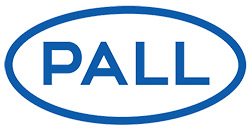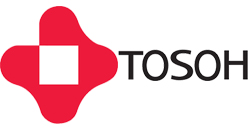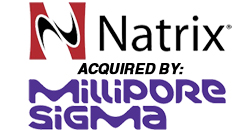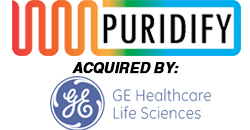As novel types of Biologics have been developed, changes in biomanufacturing approaches have been running in parallel with the intention of maximising yield and lowering production costs. Evolution Bioscience have identified 8 key production trends that will shape the Future of BioManufacturing, the sixth of which is Downstream Processing.
The Future of BioManufacturing: Downstream Processing
INTRODUCTION
Downstream processing (DSP) is an essential step in the manufacture of biologics, as well as industrial enzymes, natural fragrance & flavour compounds. DSP is typically a stepwise process involving the removal of insoluble cell debris and particulates; product isolation (extraction, adsorption, ultrafiltration, or precipitation), product purification (affinity chromatography, crystallization, or precipitation), product polishing and virus removal.
Due to the high levels of purification that biological based therapeutics require, DSP, whilst a critical step, can cause product destabilisation due to the stresses imposed, potentially resulting in degradation and/or yield reductions.
THE DSP BOTTLENECK
Downstream processing has seen significant challenges in recent years as improved upstream bioprocessing technologies and techniques have created increasingly higher product titres resulting in purification bottle necks. Additionally the recent increase in upstream single-use technologies has created pressures on DSP operations to keep pace. Considering that DSP accounts for up to 60% of the overall costs of manufacturing a biopharmaceutical, there is an obvious unmet need for novel technologies and developments to minimise these costs.
It should be noted that in addition to improvements in the means of achieving chromatographic separation and other aspects such as filtration, improved formulations are also under consideration. An example of this approach is the collaborative project between Fujifilm Diosynth Biotechnologies, British formulation technology company Arecor & The Centre for Process Innovation (CPI) entitled “Improving Downstream Operation through Formulation Innovation. The initiative has recently completed its initial rounds of DSP performance testing of formulations, showing positive results. The project uses Arecor’s Arestat™ platform, which includes proprietary formulation approaches to significantly improve the aqueous stability of therapeutic proteins, peptides, and novel format antibodies.
DOWNSTREAM PROCESSING: KEY PLAYERS
The Downstream Processing industry is dominated by five key players, collectively holding approximately 69% of overall market share. The largest player is GE Healthcare (23%), followed by Merck (17%), Pall Corporation (16%), Sartorius Stedim (7%) and 3M Cuno (6%), with other companies accounting for the remaining 31% of market share. Of these, Bio-Rad, Repligen, Thermo Fisher Scientific & TOSOH Bioscience are also notable participants.
MARKET SHARE BY COMPANY
With regards to the top product categories by market share, Chromatography and media products accounted for over $2.2B in revenue in 2016 with a CAGR of 10.5%. The second largest product category by market share (membranes and filters) accounted for over $1.7B in revenue in 2016 with a CAGR of 12%. Centrifuges rounded out the top three DSP product categories, generating revenue in excess of $500m in 2016 with a CAGR of 10.5%.
TOP PRODUCT CATEGORIES
GE Healthcare claims to be the clear market leader in chromatography, with the company stating that their media and columns are used in 90% of all biopharmaceutical manufacturing. The market for filters, tangential flow and hollow fibre membranes/systems is dominated by Merck & Pall Corporation. Sartorius Stedim, already a key player in the disposable bioreactor market, is currently seeking to challenge Merck & Pall for filter dominance. 3M Cuno’s primary position is in viral reduction filters.
THE IMPACT OF MIXED MODE CHROMATOGRAPHY
Mixed-mode chromatography (MMC) or multimode chromatography is becoming increasingly popular due to its unique selectivity and retention of a variety of compounds, especially polar and charged molecules via a combination of Anion/Cation exchange coupled to a ligand binding moiety.
Whilst MMC provides an increased number of tunable variables that offers more flexibility in method development and more applications to a variety of analytes, it also complicates the method development. Method development of MMC is more time consuming and less straight forward when comparing to any of the individual chromatography modes alone.
MIXED MODE MEDIA: ESTABLISHED PLAYERS
| Company | MMC |
|---|---|
 | Capto Range |
 | Eshmuno HCX |
 | Nuvia cPrime |
 | MEP HyperCel |
 | TOYOPEARL MX-Trp-650M |
Mixed-mode resins can directly capture target proteins at relatively high salt concentrations without dilution or other additives due to their multiple binding interactions.
Current established industry key players (outlined in the table above) offer a variety of ligands from tryptophan to hydroxyapatite, however it should be noted that the range of available ligands are relatively limited. Five new emerging players have entered the market in recent years, however all are at early stages of market development as outlined in the table below.
MIXED MODE MEDIA: EMERGING PLAYERS
| Company | Technology |
|---|---|
 | Offers On-demand, molecule-specific affinity purification |
 | Offers Natrix HD Membrane technology deployed in flow-through or bind-elute modes, compatible with nearly any ion exchange, affinity or customized chemistry |
 | Offers proprietary affinity ligands that have excellent features for stability, affinity, expressability and coupling chemistry |
| Mimetic Ligand adsorbents use highly stable, synthetic affinity adsorbents which are capable of interacting with a wide range of proteins | |
 | Developing a cellulosic matrix which can support any functionality, with evaluations focused on costly product-capture applications such as Protein A FibroSelect |
RECENT M&A ACTIVITY
In August 2017 Natrix Separations, a Canadian provider of hydrogel membrane products for single-use chromatography, was acquired by MilliporeSigma (Merck) for an undisclosed amount. MilliporeSigma CEO Udit Batra said the Natrix Technology Platform will allow MilliporeSigma to accelerate its offerings in mAb and vaccine manufacturing, creating a “tremendous opportunity to drive growth and advancement in next-generation processing – an area of increasing importance to [MilliporeSigma’s] customers.”
In late November 2017 Puridify, a UK startup developing nanofiber-based platform purification technology for bioproduction, was acquired by GE Healthcare for an undisclosed sum. Puridify, which was spun out of University College London in 2013 and was privately funded by Touchstone Innovations & SR One, has spent the last three years developing the technology in close collaboration with leading biomanufacturers with promising results.
Puridify’s technology, FibroSelect, is complementary to the bead resins and chromatography membranes used today in downstream bioprocessing, promising faster mass transfer, scalability and ease of use. Jan Makela, General Manager BioProcess at GE Healthcare, notes that “investment in this new technology is further evidence of GE’s strong commitment to innovation in the production of biopharmaceuticals to the benefit of our customers and of patients world-wide.”
With Puridify & Natrix Separations already acquired by major multinationals, the likelihood of further acquisition and consolidation within this sector remains high. Other emerging companies that could potentially be acquired include Avitide, Navigo Proteins GmbH and Prometic Bioseparations Ltd (PBL).
CONCLUSIONS
When one considers the increasing yields being reported via upstream advances, coupled with the growing range of biotherapeutics available and in development which now encompass more complex molecules such as antibody drug conjugates, bispecific antibodies & fragments, it is obvious that DSP needs to evolve to accommodate such product diversity and improvement.
Ultimately the aim is to reduce the number of steps involved, given that yield losses are experienced at each defined DSP event. Within the bioprocessing industry there is a strong desire, where applicable, to replace costly protein A as the key step in monoclonal antibody purification. In addition to the expense, the use of Protein A results in the need for further purification due to ligand leaching. Recent M&A activity strongly suggests that two major players, GE and MilliporeSigma/Merck, believe that mixed mode chromatography has a strong place in the DSP process of the future, offering the potential reduce or replace the need for protein A.
Please use the buttons below to navigate through Evolution Bioscience’s “Future of BioManufacturing” series. The next key trend focuses on In Silico Modelling.
EVOLUTION BIOSCIENCE WILL HELP YOUR BUSINESS FLOURISH



